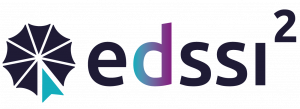For the past year, the EDSSI L2 project partners have been working on expanding the digital student infrastructure by developing a EU Student eCard management system whose ambition is to put European universities in the condition to provide their students with a digital student card that will be recognized and used all over Europe.
How revolutionary will this be in practical terms? We reached out to the higher education institution that has been leading this effort, the Humboldt University of Berlin, and asked why higher education institutions in Europe should replace plastic student cards with digital ones. Below are the 5 main reasons:
- eCards are cost effective: Student eCard are radically cheaper than their plastic counterparts. Indeed, the printing costs for digital cards are nonexistent since they can be easily downloaded and use smartphone-based technologies.
- Compatibility is an issue of the past: Compatibility is often an issue when it comes to using a physical student card issued by the home university in a different institution. On the other hand, by emulating different card types via smartphones, it is possible to have compatibility between different Concurrent Technologies.
- Access to unlimited number of student services: Physical student cards have severe limitations when it comes to saving applications on it. It is true that there are cards with lots of space, but they’re very expensive. In fact, most universities use the cheapest cards available. Digital cards are another story. You can upload an (almost) unlimited number of applications which means that the students can access a plethora of services both in their home institution and abroad.
- No more locked cards: As most universities lock their cards using a password protection system, the administrative staff of host universities cannot write nor delete applications on them. Not even if the systems of both the home and host universities are compatible. This problem is solved by using a smartphone-based system. Since it is not locked, the host university can put applications on a digital card, even if said card is released by a foreign European university.
- eCards are environmentally friendly: Last but not least, a digital card is expected to have a better impact on the environment. Indeed, higher education institutions are expressing their commitment to sustainability by including it in their domestic and internationalisation strategies. By making the switch from physical to digital, universities can send an even stronger message to their students, showing they are willing to let go of plastic cards and embrace the new card-less technologies.
If you are interested in knowing more about the enhancement of the digital eCard infrastructure, we recommend you to save the date for the EDSSI conference Volume 2 that will take place in Berlin on June 27-28, 2023.
Cover photo by Andrea Piacquadio from Pexels.


